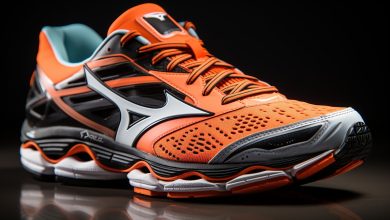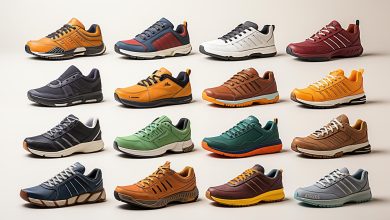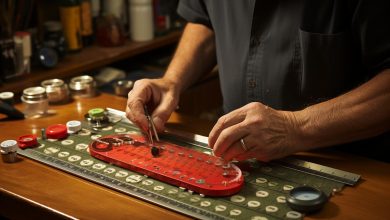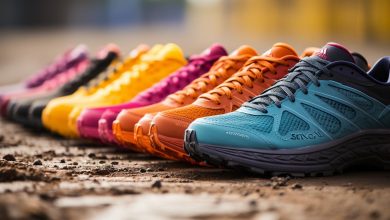Transitioning to Minimalist Running Shoes: Dos and Don’ts

Did you know that over 70% of runners experience some form of injury every year? If you’re tired of being sidelined and want to make a change, it might be time to consider transitioning to minimalist running shoes.
In this article, we will guide you through the dos and don’ts of making the switch. You’ll learn how to assess your readiness, choose the right shoes, create a gradual transition plan, and avoid common mistakes.
Get ready to improve your running game while minimizing the risk of injuries.
Assessing Your Readiness

Before making the switch to minimalist running shoes, it’s important to assess your readiness. Transitioning from traditional running shoes to minimalist ones requires careful consideration and preparation.
The first step is to evaluate your current running routine and overall fitness level. Take into account the distance you regularly run, as well as the intensity and frequency of your workouts.
One of the most crucial aspects of transitioning is understanding proper techniques. Start by gradually increasing the time spent wearing minimalist shoes during your runs. Begin with shorter distances at a slower pace, allowing your feet and muscles to adapt to the new footwear. This will help prevent injuries that can occur when abruptly switching from heavily cushioned shoes.
Another key factor to consider is listening to your body for signs of overtraining. As you adjust to minimalist running shoes, pay attention to any discomfort or pain in your feet, ankles, or lower legs. These could be indications that you are pushing too hard and need to give yourself more time to acclimate.
Assessing your readiness for minimalist running shoes involves assessing both physical and mental factors. By following proper transitioning techniques and being mindful of signs of overtraining, you can successfully make the switch and reap the benefits of this style of running.
Choosing the Right Minimalist Shoes

When selecting the proper minimalist footwear, it’s important to consider factors such as fit, flexibility, and support. Finding the right shoes will not only enhance your running experience but also help prevent injuries. Here are some key points to keep in mind:
1. Proper fitting: One of the most crucial aspects of minimalist shoes is finding the right fit. They should conform to the shape of your foot without being too tight or loose. Ensure there is enough room for your toes to splay naturally.
2. Variety of styles: Minimalist shoes come in a range of styles catering to different preferences and needs. Some have wider toe boxes for enhanced comfort, while others offer more cushioning for those transitioning from traditional running shoes.
3. Flexibility: Look for shoes that provide ample flexibility in the sole and upper construction. This allows your foot muscles to engage properly and promotes a natural gait cycle.
4. Support: While minimalist shoes are designed to provide minimal support, they should still offer some degree of stability and protection against impact forces.
Gradual Transition Plan

It’s important to create a gradual transition plan when incorporating minimalist footwear into your running routine. Transitioning too quickly can lead to injuries and setbacks, so it’s essential to take your time and allow your body to adapt.
A good starting point is to alternate between your regular running shoes and minimalist shoes during shorter runs. This will help your feet and muscles slowly adjust to the new style of footwear.
A transition timeline can vary from person to person, but a general guideline is to increase the duration of each run in minimalist shoes by 10% every week. For example, if you run 20 minutes in minimalistic shoes during week one, aim for 22 minutes in week two. Gradually increasing the time spent in minimalist shoes will allow your body ample time for adaptation.
Finding motivation during this transition period is crucial. It’s normal to experience discomfort or muscle soreness as you adjust to the new footwear, but reminding yourself why you made the switch can help keep you motivated. Focus on the benefits of minimalist running such as improved foot strength, better balance, and reduced risk of certain injuries.
Incorporating minimalist footwear into your running routine requires patience and perseverance. By following a gradual transition plan and finding motivation along the way, you’ll be able to enjoy all the benefits that minimalist running has to offer.
Strengthening Exercises for a Smooth Transition

To prepare for a smooth transition, incorporate strengthening exercises into your routine. By focusing on foot flexibility and balance training, you can enhance your body’s ability to adapt to minimalist running shoes. Here are four exercises that will help strengthen your feet and improve your overall stability:
1. Toe curls: Sit on a chair with both feet flat on the ground. Slowly curl your toes under, as if trying to pick up a towel with them. Hold for a few seconds and then release. Repeat 10 times.
2. Single-leg stands: Stand upright and lift one leg off the ground, balancing on the other leg for 30 seconds. Switch legs and repeat three times on each side.
3. Heel raises: Stand with both feet flat on the ground and slowly rise up onto your toes, lifting your heels off the floor as high as possible. Hold for a moment before lowering back down. Do three sets of 10 repetitions.
4. Ankle circles: Sit in a chair with one leg extended in front of you. Rotate your ankle clockwise for 10 seconds, then switch to counterclockwise rotation for another 10 seconds. Repeat this exercise three times on each ankle.
By incorporating these exercises into your routine, you will gradually build strength and improve stability in preparation for transitioning to minimalist running shoes.
Now let’s move onto common mistakes to avoid when making this transition.
Common Mistakes to Avoid

Make sure you’re aware of common mistakes to avoid when you’re preparing for a smooth transition to minimalist running shoes.
One of the most important things to keep in mind is proper running form. Many people make the mistake of thinking that because they are switching to minimalist shoes, they can automatically adopt a forefoot strike pattern. However, it’s crucial to remember that proper form involves more than just foot strike. You should focus on maintaining an upright posture, engaging your core muscles, and keeping your stride length short.
Another mistake many people make is neglecting the importance of foot strengthening exercises. Transitioning to minimalist shoes requires strong feet and ankles to support the change in footwear. Incorporate exercises like toe curls, calf raises, and single-leg squats into your routine to build strength and stability in these areas.
Furthermore, one common error is transitioning too quickly. It’s essential to gradually increase the amount of time you spend wearing minimalist shoes. Start by wearing them for shorter distances or during low-impact activities until your feet and legs adjust.
Lastly, don’t forget about listening to your body. If you experience any pain or discomfort during the transition process, take a step back and reassess your approach. Remember that everyone’s journey is different, so be patient with yourself and give your body time to adapt properly.
Conclusion
Congratulations on making the decision to transition to minimalist running shoes! By assessing your readiness and choosing the right shoes, you’re well on your way to a smooth and successful shift.
Following a gradual transition plan and incorporating strengthening exercises will also help you adapt to the new shoes.
Remember to avoid common mistakes along the way, as they can hinder your progress.
Just like shedding unnecessary weight from your run, adopting minimalist shoes can lighten your stride and propel you towards a more natural and efficient running experience.
Embrace this change and let your newfound freedom carry you to new heights.
Happy running!






